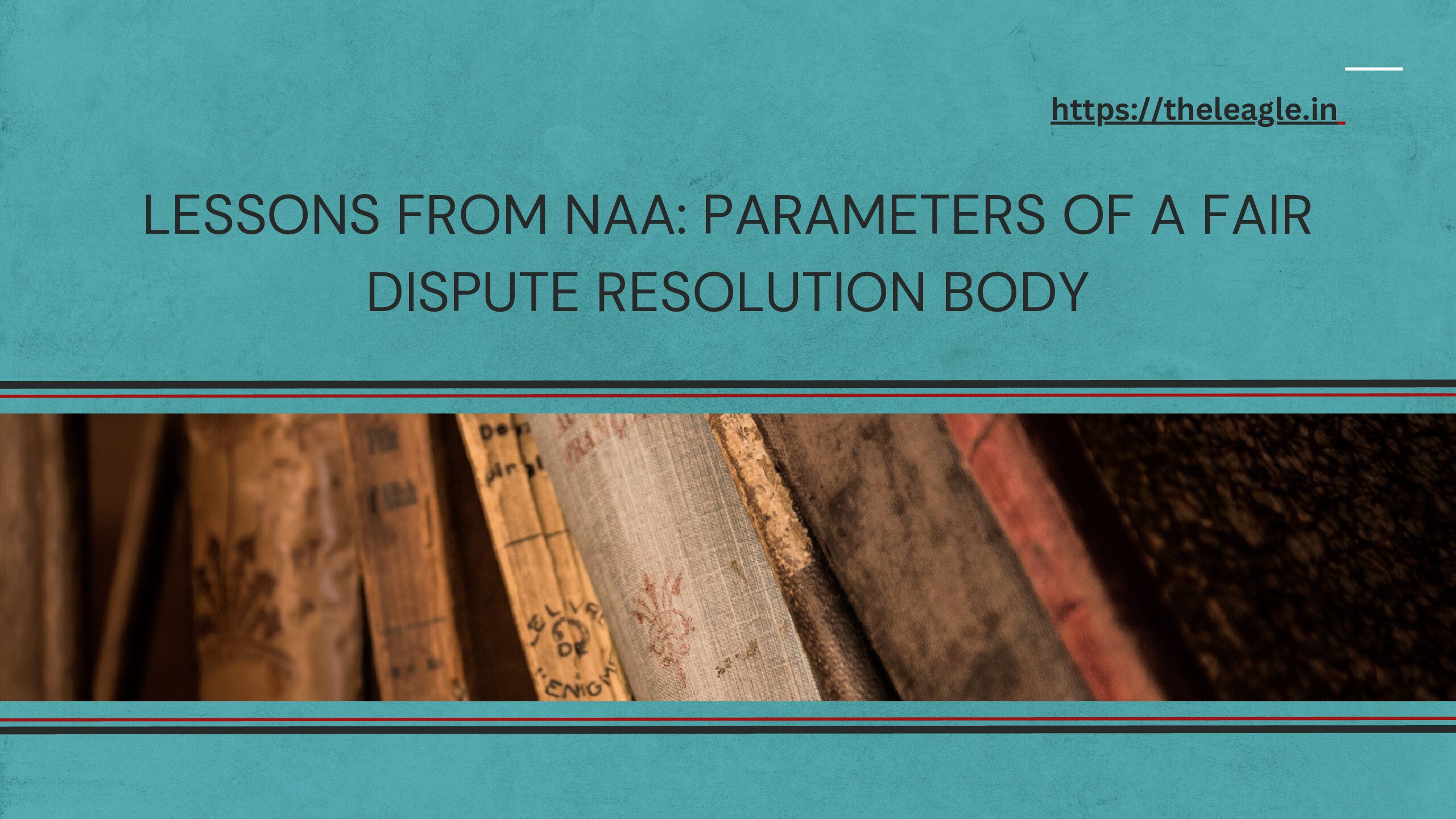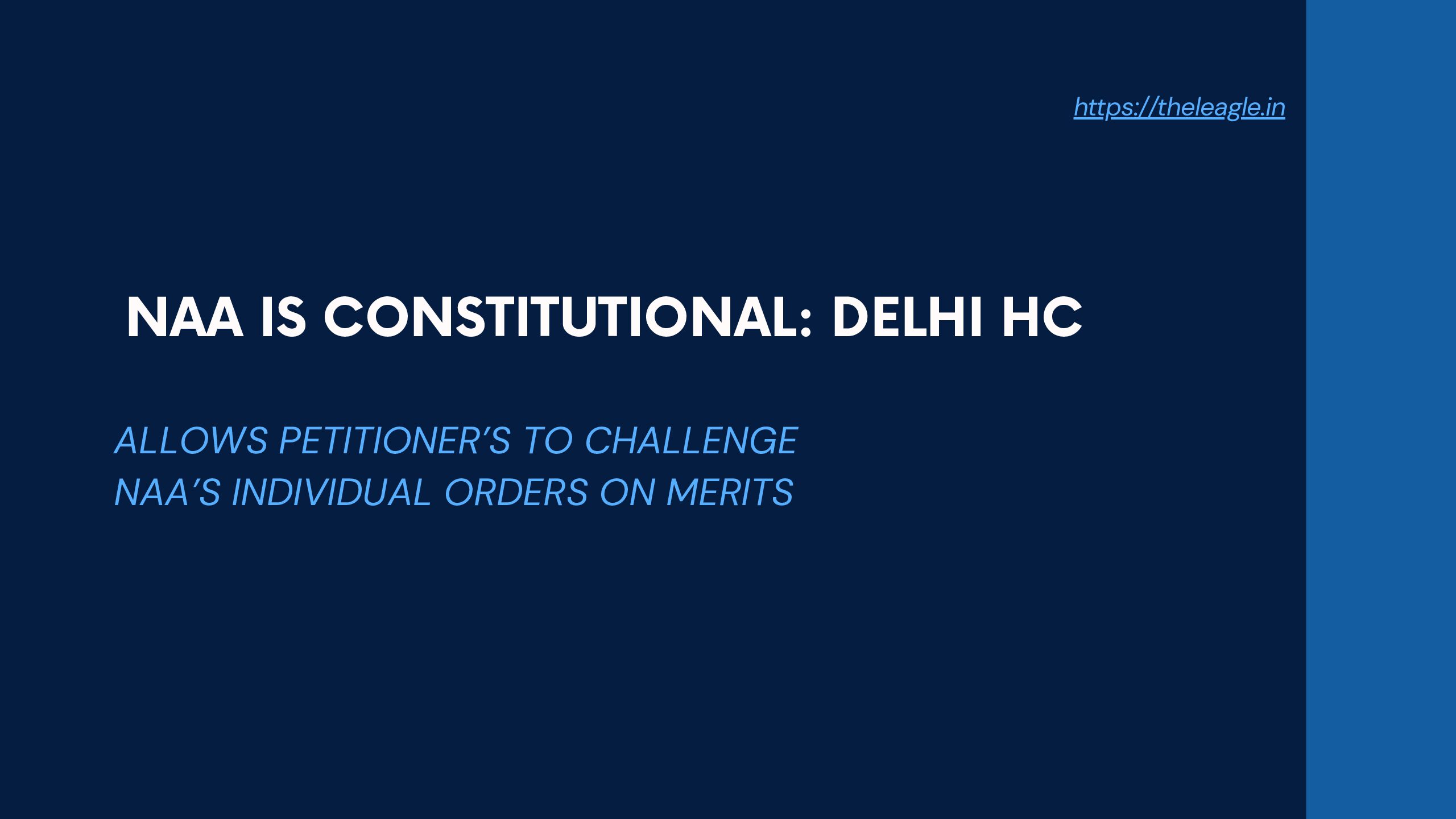The experience of transitioning from retail sales tax to VAT laws in 2002-03 provided a learning that a similar transition to GST may be used as a pretext by suppliers to artificially increase the prices of goods and services and profiteer at the expense of retail consumers. To protect consumer interest, an anti-profiteering provision was included in Section 171 of the CGST Act, 2017 which mandates that any reduction in tax rate or the benefit of ITC shall be passed on to the consumer by way of commensurate reduction in prices. And under the same provision the Central Government was empowered to either notify an existing authority or create a new authority to implement the mandate. And a new body in the form of National Anti-Profiteering Authority (‘NAA’) was duly constituted to implement the mandate of Section 171.
NAA’s constitution via delegated legislation, opaqueness about its methodology to determine profiteering, absence of an appellate remedy, and the rhetoric filled nature of its orders created fertile grounds for arguments that it was an unconstitutional body. Recently, the Delhi High Court upheld the constitutionality of NAA though it provided the petitioners the liberty to challenge the individual orders of NAA on merits. I’ve previously examined the limitations and flaws in the judgment. In this article, I rely on NAA’s working and the Delhi High Court’s judgment to extrapolate some parameters which should be the touchstone to examine the efficacy and fairness of a tax dispute resolution body.
Providing Appropriate Policy Guidance
A crucial issue that characterises the administration of tax laws in India is the nature and extent of delegated legislation. Statutory provisions are consistently interpreted, re-interpreted by the executive via Circulars, Notifications, and Press Releases which are also constantly issuing instructions that require attention and compliance by taxpayers. The content of several such secondary legislative instruments is not only far removed from the parent statute, but the policy is also rarely encoded in the statute. The issue of delegated legislation, and its legal scope, becomes even more acute when the statute does not provide adequate policy guidance to the decision-making body creating a danger of the body interpreting its mandate beyond the confines of the parent statute. And more crucially, leaving the stakeholders clueless about the scope of jurisdiction of the decision-making body and the nature of disputes that it can adjudicate.
The fact that NAA did not contain adequate policy guidance was one of the petitioner’s main contentions before the Delhi High Court and rightly so. While Section 171 does state the broad compliance that suppliers need to adhere, it provides no insight into the nature and scope of of the body that is empowered to implement the mandate. NAA’s and the Delhi High Court’s opinion was that Section 171 is a ‘self-contained code’; but, interpreting the broad mandate of Section 171 as an adequate policy direction is not ideal. Certainly not from the perspective of taxpayers. The jurisdiction and mandate of the decision-making body needs to be prescribed more precisely and preferably by the legislature or executive. The body in question should not have the authority to determine its own jurisdiction and procedure which it can interpret in a self-serving manner.
Creating an Accountability Mechanism
Creating accountability mechanisms for judicial or quasi-judicial bodies has been a tough road in India. For example, we are yet to determine the appropriate method and manner of determining the accountability of judges of High Courts and the Supreme Court. One way the accountability invariably gets attached to judicial or quasi-judicial bodies is through the process of appeals against their orders. It allows the petitioner an opportunity to make additional or better arguments, at the same time another body can scrutinize the order on the touchstone of fairness, interpretive coherence, and other similar parameters. In the absence of a statutory right to appeal for the parties, the risk of perverse orders and opaque functioning increases dramatically. For example, in NAA’s case the parties were not provided a statutory right to appeal against its orders and could only approach the High Court via writ petitions which is accompanied with its own limitations. NAA could only be supervised by the GST Council, which if the minutes of its meetings as anything to go by, treated its job of supervising NAA superficially.
One consistent and oft-repeated theme in NAA’s orders was the taxpayers demanding that NAA makes its methodology for calculating profiteering public and NAA replying that it had issued a document – which actually did not state the methodology – and regardless, calculating amount of benefits that needs to be passed to customers wasn’t a tough or complex task and taxpayers could do it themselves. And yet when taxpayers challenged NAA’s constitutionality on the ground that it lacked a judicial member, etc., NAA replied that it was an ‘expert body’ involved in complex work of determining profiteering and need not be compared to quasi-judicial or judicial bodies. Opaqueness and inconsistencies in NAA’s orders were abound but there was no superior or appellate authority that could scrutinize its decisions and present and alternate or a modified view of the facts and dispute in question. It is one thing to say that the constitutionality of a body cannot be challenged on the ground that there is no right to appeal against its orders, but the implications of the absence of such a right extend beyond the constitutionality argument and tax administration needs to be mindful of them.
Defined Identity as an Adjudicatory Body or a Regulator
Taxation law primarily concerns itself with the relationship of State with its residents with the former exercising its coercive power to extract financial resources for its sustenance. The disputes about the scope of the State’s powers are typically adjudicated by classical dispute resolution bodies, mostly successfully. In mediating the relationship of the State and its residents qua their tax obligations, the need for a regulator rarely presents itself. Thus, while sectoral regulators in other spheres such as banking law, securities law, etc. is relatively common, we do not witness similar bodies in tax law universe. Irrespective, when novel or ‘atypical’ bodies are created for administration of tax laws, it is incumbent on the legislature to be precise in stating the rationale and need for the body. Else, not only are the stakeholders confused, but the ‘atypical’ body itself suffers from an identity crisis and looks to fulfil the mandate of both a traditional dispute resolution body and a sectoral regulator and is frequently unable to do justice to neither.
In the case of NAA, it is still unclear if it was intended to be a dispute resolution body or a regulator. But one thing we do know that NAA fancied itself as an expert body and a sectoral regulator and frequently drew analogy of its mandate with SEBI. The analogy was always flawed because SEBI is creation of a dedicated statute, has a Board, and separate dispute resolution bodies while NAA, created via delegated legislation, was a coalesced body consisting of a few technical members which adjudicated on disputes and complaints relating to profiteering. The investigate arm of NAA, DGAP, was answerable and bound by all directions of NAA removing all and any pretence of checks and balances in its operation. There was no clear identification of its role beyond the general mandate contained in Section 171 and NAA itself did not satisfactorily fulfil the role of either a regulator or a dispute resolution body.
De Minimis Requirement of Reasoned Orders
In respect of taxation law, the absence of well-reasoned orders is a widespread symptom that affects advance ruling authorities, tribunals and to some extent even High Courts and the Supreme Court. While speaking orders are a minimum requirement or at least an expectation from any judicial or quasi-judicial or for that matter any administrative body, there is a need to ensure that the orders satisfy the minimum standards of a reasoned order. This can be done through careful selection of personnel and/or ensuring accountability mechanisms in form of an appellate body as suggested above.
While people like me and more skilled than me examine and critique the various such orders, there was something fundamental amiss in the NAA’s orders: skill of writing a judgment. The Delhi High Court in its recent judgment has incorrectly noted that NAA was only a fact-finding body and did not adjudicate on rights and liabilities. NAA not only heard arguments of the taxpayers who were defending their conduct, but also of complainants, and adjudicated on their rights and obligations. But in most of its orders, one found a lack of engagement with the various arguments that the parties raised and instead a generous dose of rhetoric, stonewalling, and sidestepping with substantive arguments. NAA interpreted the relevant statutory provisions were interpreted pedantically and did not even acknowledge important arguments when arriving at its conclusions, violating basic tenets of judgment writing. It is important that vital tax law matters are not decided in a whimsical fashion with disregard to taxpayer rights and a well reasoned judgment is provided by the authorities in question.
Conclusion
The above are by no means exhaustive or even necessary conditions to design a fair and transparent tax dispute resolution body. I’ve only picked cues from the working of NAA and the arguments presented by petitioners before the Delhi High Court to make a tentative case for designing dispute resolution bodies under the tax law umbrella. I’ve highlighted some of the above parameters based on my own previous assessment and observation of the NAA’s working and how, in my view, there was a wide bridge between the laudable objectives of setting up an anti-profiteering regime under GST and the NAA implementing the said mandate in an opaque manner via questionable orders that barely met the minimum requirements of respecting taxpayer rights and administering tax justice.

